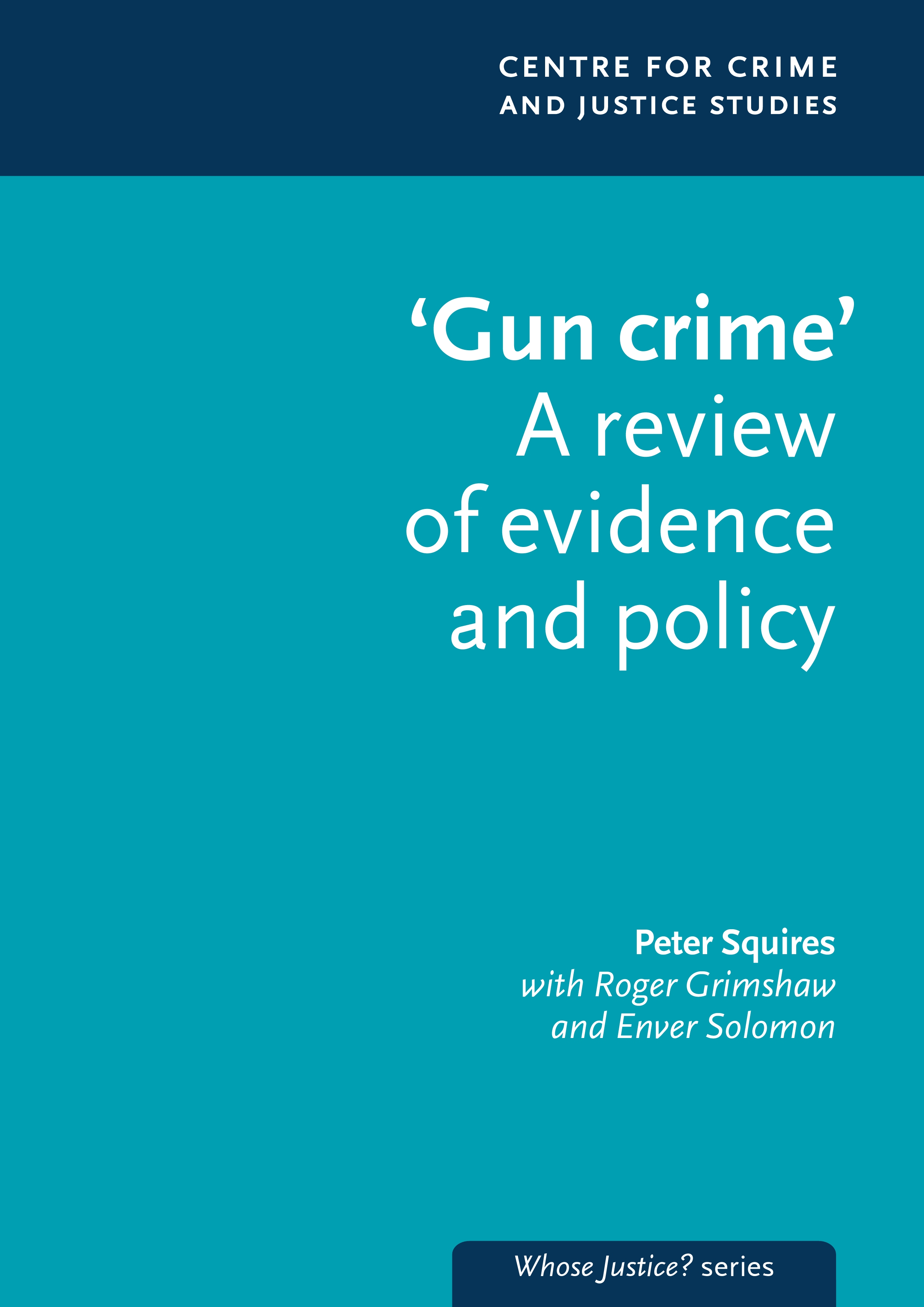Most of the problems associated with the illegal use of firearms require social and economic rather than criminal justice solutions, according to a report published by the Centre for Crime and Justice Studies.
‘Gun Crime’ A review of evidence says that there `is no compelling evidence' that the current largely enforcement led strategy adopted by the government `is likely to prove a durable or effective way of dealing with firearm related offending'.
It finds that mandatory minimum sentences are not an effective means of addressing the problem and argues that an effective response to gun crime needs to address the `causes and contexts of interpersonal violence'.
The report provides a detailed analysis of recent research and official data. It highlights extensive gaps in existing knowledge and the inadequacy of policies based on `an at best partial understanding of the issues'.
The comprehensive review of evidence and policy states that:
- Use of firearms in crime in England and Wales represents less than 0.5 per cent of all police recorded crime and if crime committed with air weapons is excluded it accounts for 0.2 per cent of recorded crime. Latest figures show there has been a 13 per cent year on year decline. However, since 1998-1999 firearm crimes have increased by a third and there has been an 85 per cent increase in crimes excluding air weapons. There has also been a significant increase in the use of imitation firearms.
- Firearms were used in 59 homicides in 2006-2007 constituting 8 per cent of all homicides that year and representing an 18 per cent increase on the previous year. Although in 2005-2006 the lowest firearm homicide total for almost a decade was recorded.
- In 2006-2007 only 3 per cent of recorded firearm crimes resulted in serious or fatal injuries. The number of serious injuries has been stable, never exceeding 600 since 1998-1999 but the number of firearm crimes, excluding air weapons, resulting in serious or fatal injury has more than doubled.
- Firearms are most commonly used to cause criminal damage although this is dominated by damage caused when air weapons are fired. Violence against the person is up as a proportion of all firearm crime, although homicide has declined.
- Official data only covers offences in which firearms were used and so excludes data for simple firearm possession offences and for other offences resulting from the breach of firearms control laws, such as trafficking and adaptation. The size of the illegal gun stock is therefore unknown.
- The available research shows that children, young people, those living in deprived areas and members of black and minority ethnic communities are more likely to be the victims and to be convicted of firearm offences.
Peter Squires, Professor of Criminology and Public Policy at Brighton University, said:
'This report examines what we do and don't know about gun crime to establish a basis from which we can start asking the right questions and developing effective policies. It demonstrates that the use of guns is a product of conflict and violence in deprived and excluded communities and once we understand that we can start addressing causes and not just symptoms.'
Roger Grimshaw, Research Director at the Centre for Crime and Justice Studies, said:
'Though few people are seriously injured by the criminal use of firearms, many more are frightened. Myth and fantasy surround offences that feature a bewildering array of both fake and real guns. Because "gun crime" is indeed a potent cause of fear, it needs to be far better understood; otherwise we will all be hoodwinked into accepting calls for panic measures instead of more effective long term solutions.'
